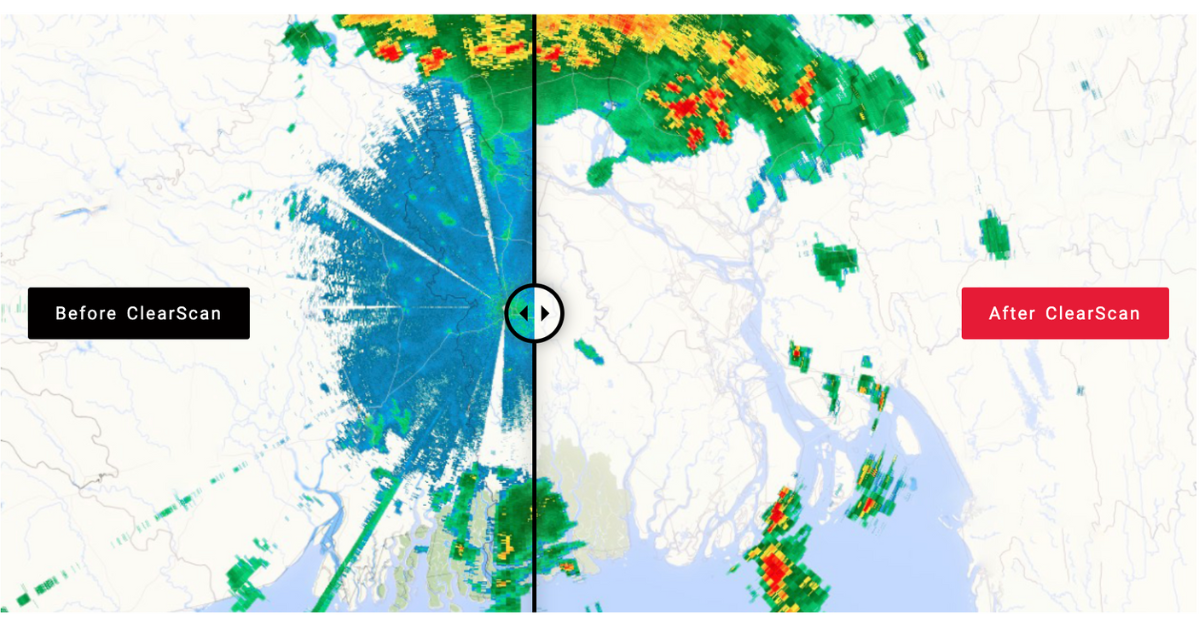The S-band radar is a powerful multi-purpose workhorse ideally suited for subtropical and tropical regions and areas prone to heavy rain and flooding. It provides long-range detection up to 200 miles away, can detect storms behind other storms, and is less susceptible to atmospheric attenuation that impacts and degrades many other radars.
The Advantages of Baron S-band Radars
Selecting the right radar for your application is finding the right balance between capability and accuracy. S-band radars provide more accurate observations, aiding in better analysis and interpretation of the weather data. Here are more things to know about S-band radars.
Penetration
S-band radars can penetrate through weather conditions like heavy rain, snow, and fog, making them highly effective for meteorological applications.
Range Resolution
S-band radars provide better range resolution than lower-frequency radars. This, in turn, offers the ability to distinguish between closely spaced objects, making them suitable for applications that require high accuracy and precision.
Dual-Polarization
Baron’s S-band radars feature dual-polarization as a standard option, whether powered by a klystron or magnetron transmitter. (Simultaneous horizontal and vertical transmission means more preciseness when analyzing flooding, hail, winter precipitation, and tornados.) Dual-pol radars have the advantage over single-polarity radars because they can detect the change in the shape and size of the rain and hail as precipitation gets heavier, providing a more accurate display of precipitation.
Next-Generation Radar Processor
Baron’s signal processor delivers value-added product creation and automated storm tracking.
Clutter Suppression
Baron’s ClearScan™ removes the unwanted noise, resulting in cleaner, easier-to-read, and more accurate radar data displays. ClearScan can learn to improve RF interference around the radar location automatically. In another Baron exclusive, via a technology license from the University of Oklahoma, CLEAN-AP enables superior ground clutter suppression in addition to optimally and dynamically adapting the suppression process.

Radial-by-Radial ZDR Calibration
Baron’s patent-pending technology provides reliable and continuous network-wide calibration during weather conditions, requiring less maintenance and on-site expertise.
Open Data Architecture
Baron S-band weather radars feature an open architecture for easier access to data at various points throughout the processing chain.
Components and Maintenance
Wide-access panels provide easy access to major components, reducing personnel hours on preventative maintenance and repair. Pedestal motors deliver rugged durability. Spare parts can be shared across multiple systems in the field, reducing costs and maximizing uptime.
Remote System Monitoring
Built-in test equipment automatically alerts personnel if potential issues occur. Additionally, meteorologists from the Baron Operations Center are available around the clock to answer questions and troubleshoot.
Sustainability
The purpose of the radar is to provide clear-cut data, enable earlier warnings, and build a sustainable meteorological process. Baron designs and sources long-lasting components so customers are assured they have the best path for extending equipment life. Not to mention, Baron has also reduced the number of computers and transitioned to a high-performance computer with multiple virtual machines to reduce power consumption and future electronic waste.
Experience and Expertise
Baron has been in the industry for decades, creating products and services to support customers worldwide. In fact, Baron supports and services a commercial network of more than 350 C-band and S-band radars. Our customers have trusted Baron to provide outstanding service for over 30 years. Partnering with Baron means a client has an expert resource and advocate 24 hours a day, seven days a week.
Did You Know?

Baron also offers a compact version of an S-band radar for organizations and agencies looking for the power and performance of S-band radar in a more budget-conscious product. The reduced-size S-band has a smaller radome and antenna. Shrinking the dish and radome size reduces the production costs and infrastructure needed to support the radar.
